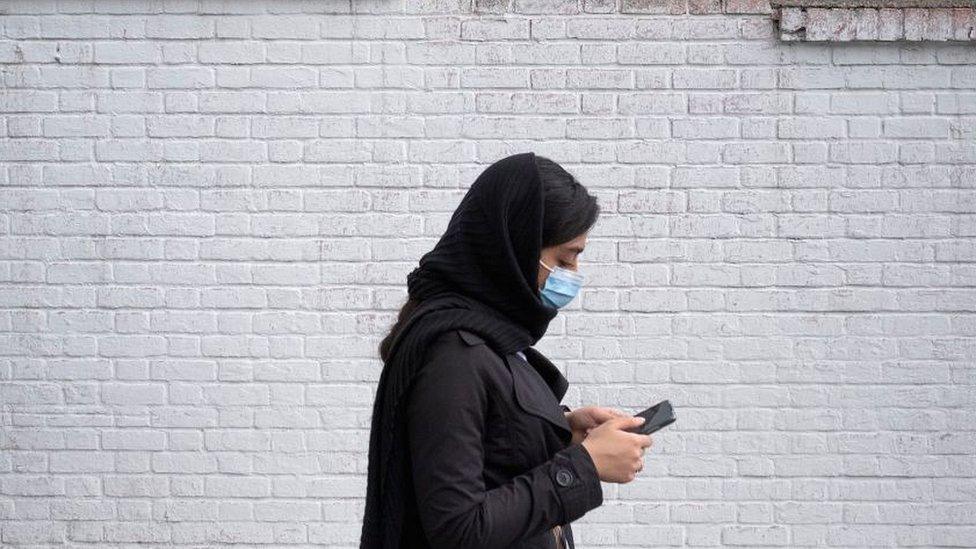Iran media guide
- Published
This page is no longer being updated. It was last updated on 8 July 2024

All broadcasting from Iranian soil is controlled by the state and reflects official ideology. There is a wider range of opinions online and in the press.
Iran is one of the world's most repressive countries for journalists, says Reporters Without Borders. They are "constantly subjected to intimidation, arbitrary arrest and long jail sentences imposed by revolutionary courts at the end of unfair trials".
Television is more popular than radio and newspapers, but surveys in recent years have found the public are increasingly ditching the state broadcaster, Islamic Republic of Iran Broadcasting (IRIB), for social media as their main source of news.
All broadcasting is controlled by the state and propagates state policy and ideology. IRIB faces a growing challenge from mobile apps, especially Telegram and Instagram, for news and live coverage of events.
Although private ownership of satellite TV receiving equipment is technically illegal, there is a big audience for foreign-based Persian-language satellite channels. Around 70% of households have a satellite dish.
Debate in the press takes place within legal restrictions and unwritten red lines. Criticism of Islam, the late Ayatollah Khomeini or Supreme Leader Ayatollah Ali Khamenei is not tolerated in the domestic press or broadcast media, and nor is questioning the legitimacy of the Islamic Republic.
Recent governments have pledged to enhance press freedom but bans on news outlets and crackdowns on journalists are still commonplace.
Dozens of Persian-language stations broadcast from the USA, Europe and Dubai.
Western broadcasters, including BBC Persian TV, target Iranian audiences. Their satellite broadcasts have suffered from deliberate interference from within Iran.
IRIB's radio channels include a parliamentary network, Radio Koran and a multilingual external service.
The press reflects a range of political viewpoints, albeit within unwritten rules or "red lines". Few Iranians buy a newspaper every day. Sport titles are the biggest sellers.
There were 78 million internet users by July 2022, comprising 91% of the population (Internetworldstats.com).
The authorities routinely block or filter websites they consider objectionable. Targeted content includes that deemed to be pornographic or anti-Islamic.
Iranians use virtual private networks (VPNs) and other methods to circumvent filtering.
Facebook, although blocked, is among the most popular social media platforms. Twitter is blocked for ordinary citizens, but leaders and senior officials are active on it. Instagram is a staple of social media life.
Press
Iran, external - the "official" paper, representing government policies, published by the state news agency IRNA
Iran Daily, external - English-language, published by IRNA and reflects government policies
Javan, external - affiliated to the Islamic Revolution Guards Corps (IRGC)
Tehran Times, external - state-run English-language daily
Sharq (The East), external - reformist daily
E'temad, external - reformist daily
Kayhan (Universe), external - conservative daily
Resalat (Message), external - conservative daily
Jomhuri-ye-Eslami (Islamic Republic), external - conservative daily
Jaam-e Jam (Jam's Cup), external - large-circulation daily published by IRIB
Television
IRIB, external - state-run, operates provincial, national and international services
Press TV, external - IRIB's English-language satellite channel
Al-Alam, external - IRIB network in Arabic
Radio
IRIB, external - state-run, operates eight national networks, provincial services and an external service
News agencies
Islamic Republic News Agency (IRNA), external - state-run, English-language pages
Iranian Students News Agency (ISNA), external - English-language pages
Fars News Agency, external - affiliated to the Islamic Revolution Guards Corps, English-language pages
Mehr News Agency, external - affiliated to Islamic Propagation Organisation, English-language pages
Tasnim News Agency, external - affiliated to the Islamic Revolution Guards Corps
Nour News, external - affiliated to the Supreme National Security Council